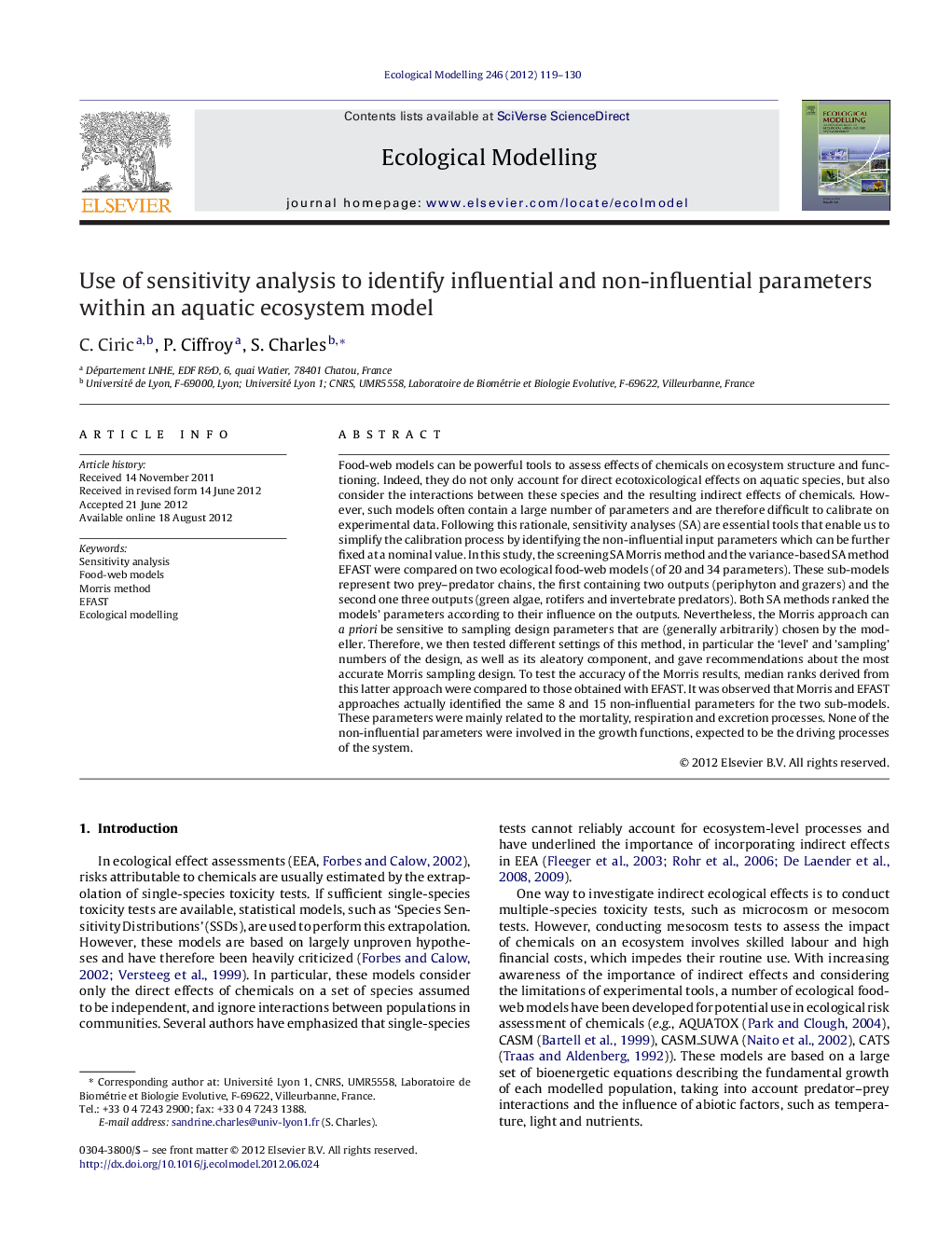| کد مقاله | کد نشریه | سال انتشار | مقاله انگلیسی | نسخه تمام متن |
|---|---|---|---|---|
| 4376298 | 1617499 | 2012 | 12 صفحه PDF | دانلود رایگان |

Food-web models can be powerful tools to assess effects of chemicals on ecosystem structure and functioning. Indeed, they do not only account for direct ecotoxicological effects on aquatic species, but also consider the interactions between these species and the resulting indirect effects of chemicals. However, such models often contain a large number of parameters and are therefore difficult to calibrate on experimental data. Following this rationale, sensitivity analyses (SA) are essential tools that enable us to simplify the calibration process by identifying the non-influential input parameters which can be further fixed at a nominal value. In this study, the screening SA Morris method and the variance-based SA method EFAST were compared on two ecological food-web models (of 20 and 34 parameters). These sub-models represent two prey–predator chains, the first containing two outputs (periphyton and grazers) and the second one three outputs (green algae, rotifers and invertebrate predators). Both SA methods ranked the models’ parameters according to their influence on the outputs. Nevertheless, the Morris approach can a priori be sensitive to sampling design parameters that are (generally arbitrarily) chosen by the modeller. Therefore, we then tested different settings of this method, in particular the ‘level’ and 'sampling’ numbers of the design, as well as its aleatory component, and gave recommendations about the most accurate Morris sampling design. To test the accuracy of the Morris results, median ranks derived from this latter approach were compared to those obtained with EFAST. It was observed that Morris and EFAST approaches actually identified the same 8 and 15 non-influential parameters for the two sub-models. These parameters were mainly related to the mortality, respiration and excretion processes. None of the non-influential parameters were involved in the growth functions, expected to be the driving processes of the system.
► We develop a food-web model.
► We compare two sensitivity analysis methods, the Morris method and EFAST on two models.
► We tested different settings of the Morris method.
► Both sensitivity analysis methods found 8 and 15 non-influential parameters.
► The Morris method is adapted for use on a complex model.
Journal: Ecological Modelling - Volume 246, 10 November 2012, Pages 119–130